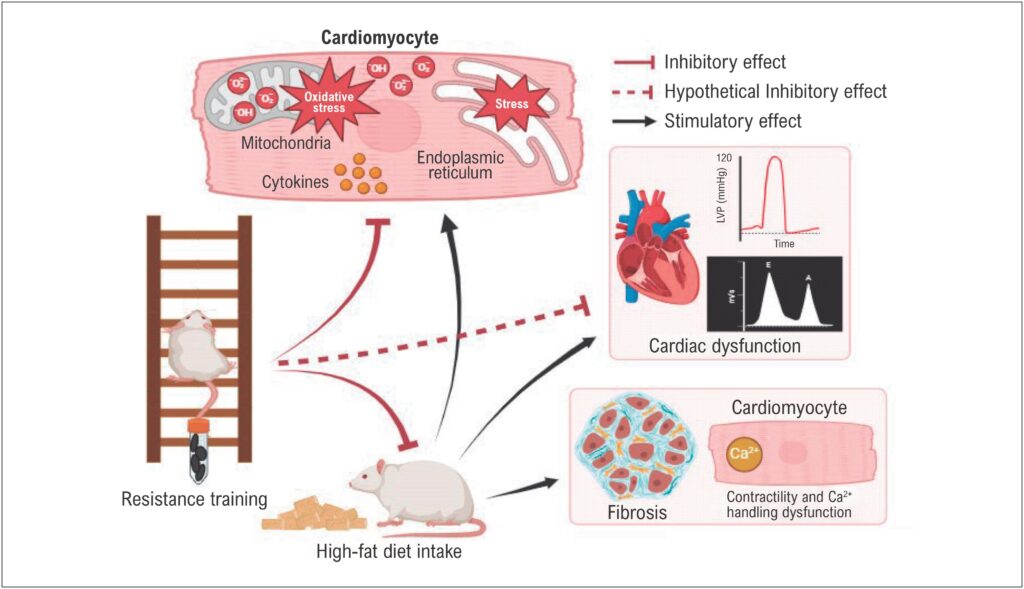Arq. Bras. Cardiol. 2024; 121(4): e20240091
High-Fat Diet and Heart: What is the Real Impact of Resistance Exercise Training?
This Short Editorial is referred by the Research article "Resistance Exercise Training Mitigates Cardiac Remodeling Induced by a High-Fat Diet in Rodents: A Systematic Review".
Long-term consumption of a high-fat diet (HFD) causes macrophage infiltration in the myocardium, which begins to secrete cytokines involved in cardiac inflammation. In this regard, interleukin-1β (IL-1β) plays a key role. Elevated levels of IL-1β trigger mitochondrial production of reactive oxygen species (ROS). The burst of ROS in the myocardium contributes to the development of diastolic dysfunction and heart failure with preserved ejection fraction in an experimental HFD model.
A current systematic review by Portes et al. has shown that resistance training (RT) can mitigate a variety of harmful effects of HFD on the heart. The article by Portes et al. reviewed original articles carried out in HFD rodents subjected to an RT program of at least four weeks comparing non-trained animals. Five studies were considered eligible, and ladder climbing with external load was the RT method applied.– Another three studies have found a reduction in body mass in animals subjected to RT,,, indicating that one pathway through which RT may promote cardioprotection may be reducing HFD. However, none of these studies reported food intake.,, A single study by Kim et al. assessed weekly food intake in middle-aged rats, who demonstrated that RT could upregulate proteins linked to mitochondrial biogenesis and reduce markers of sarcoplasmic reticulum stress without affecting HFD intake and body mass.
[…]
446

